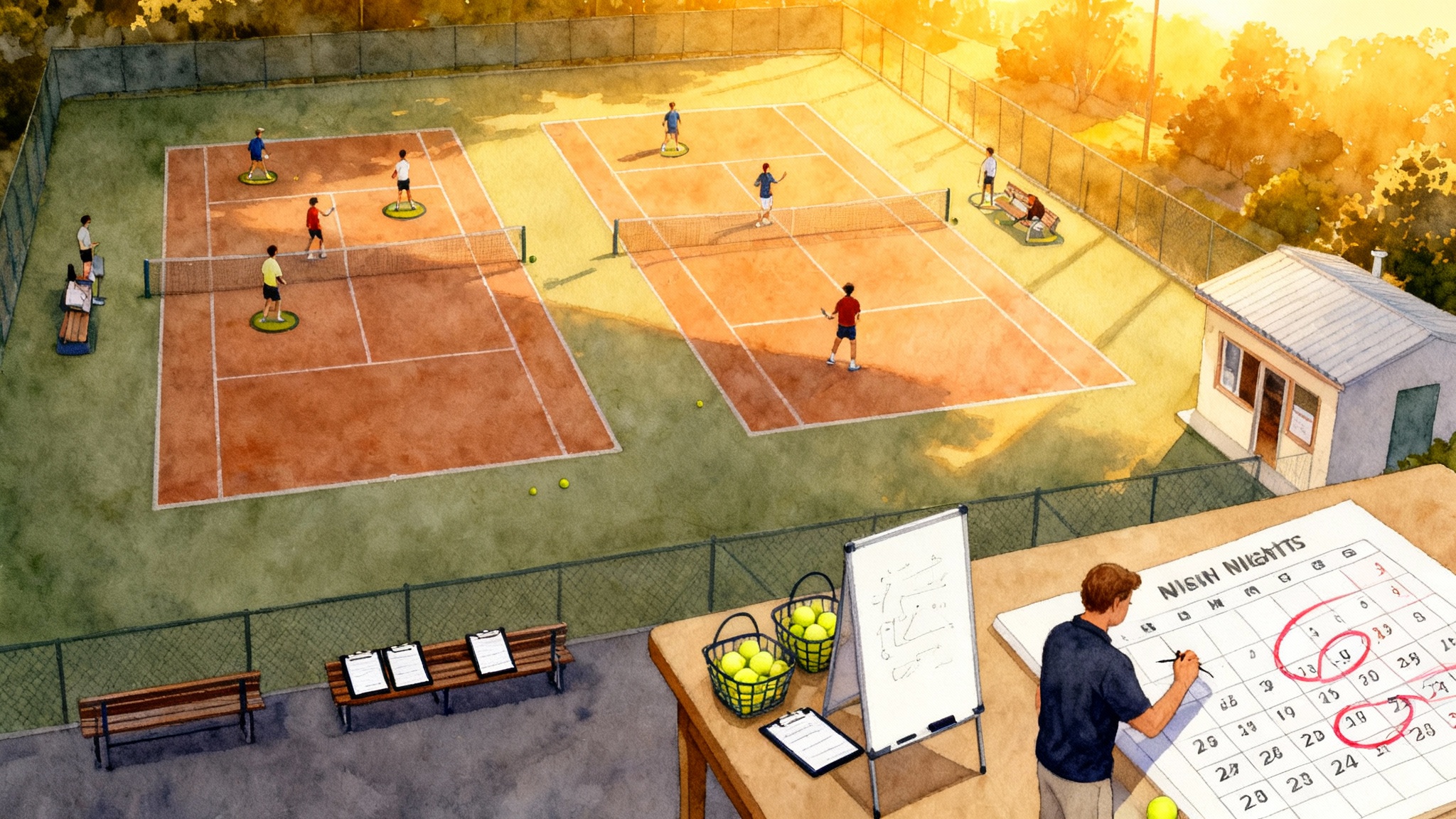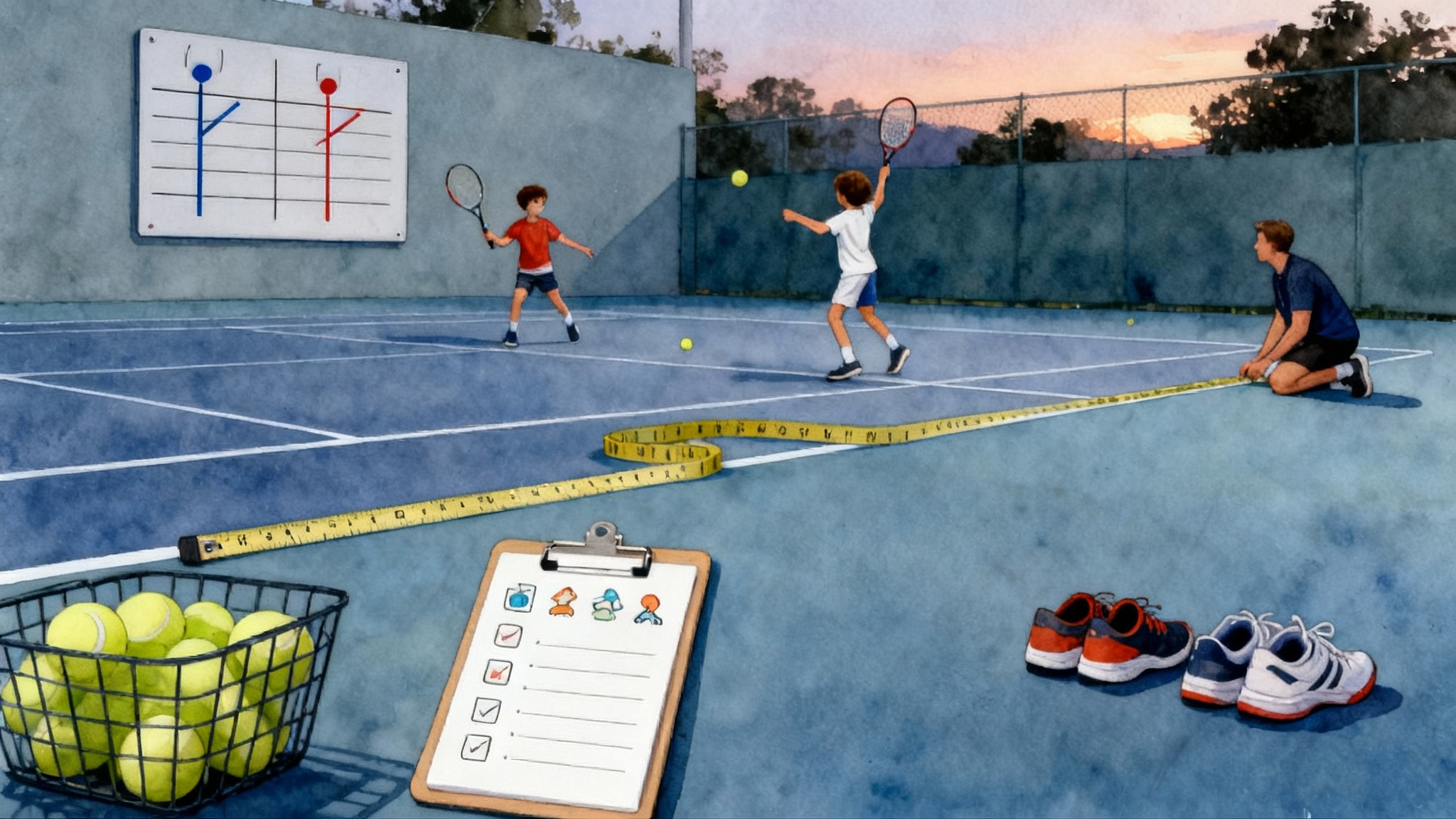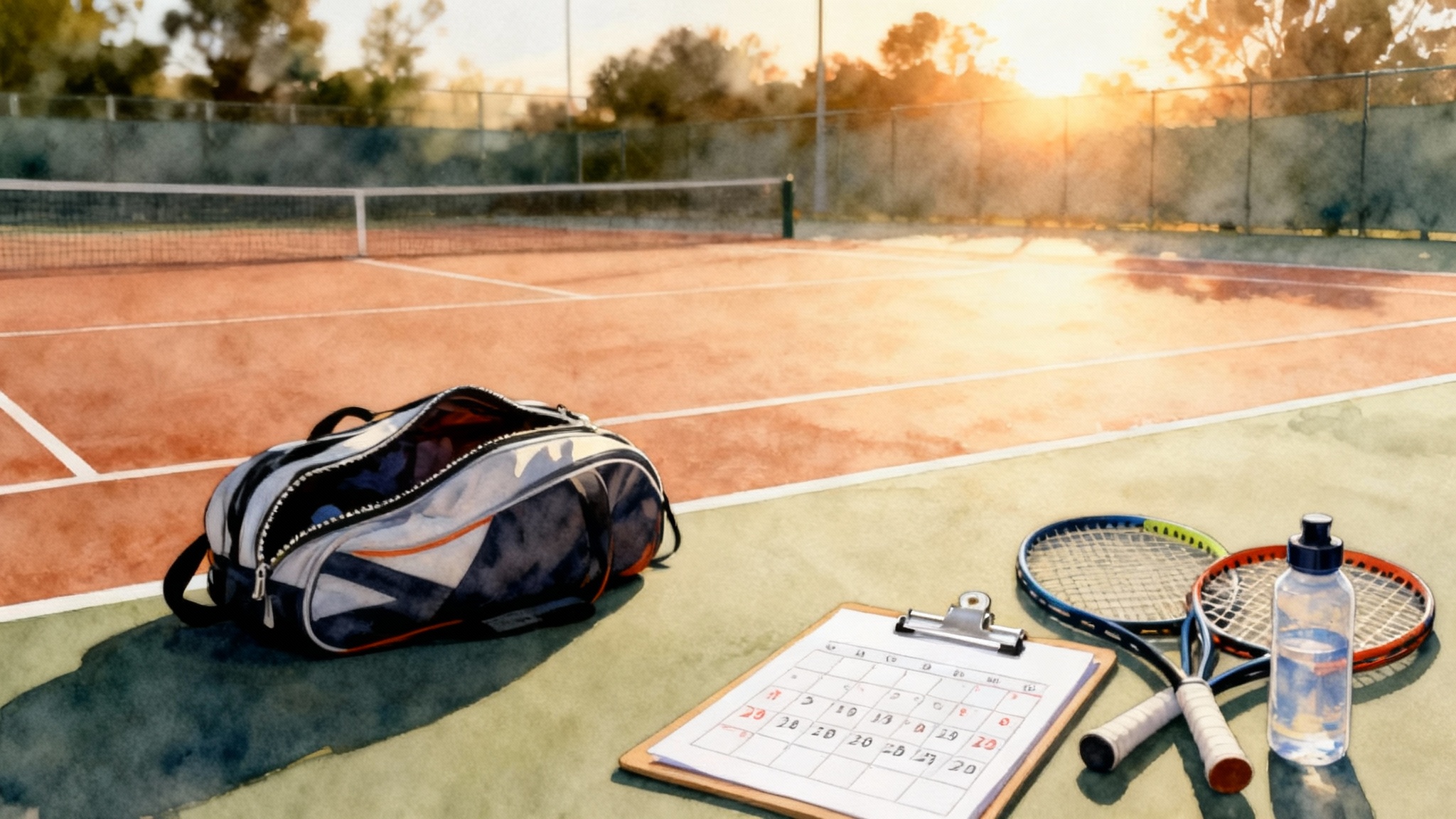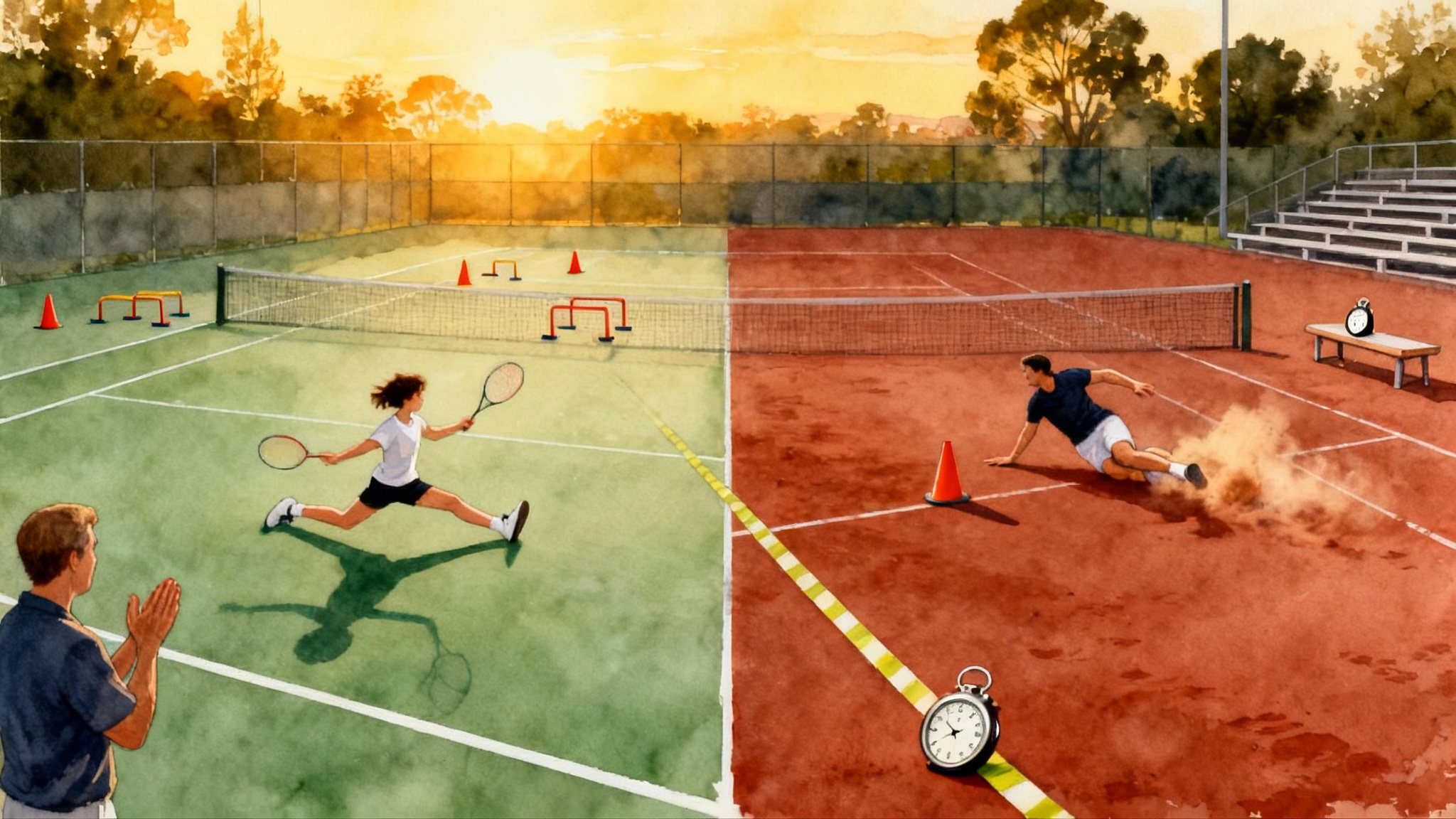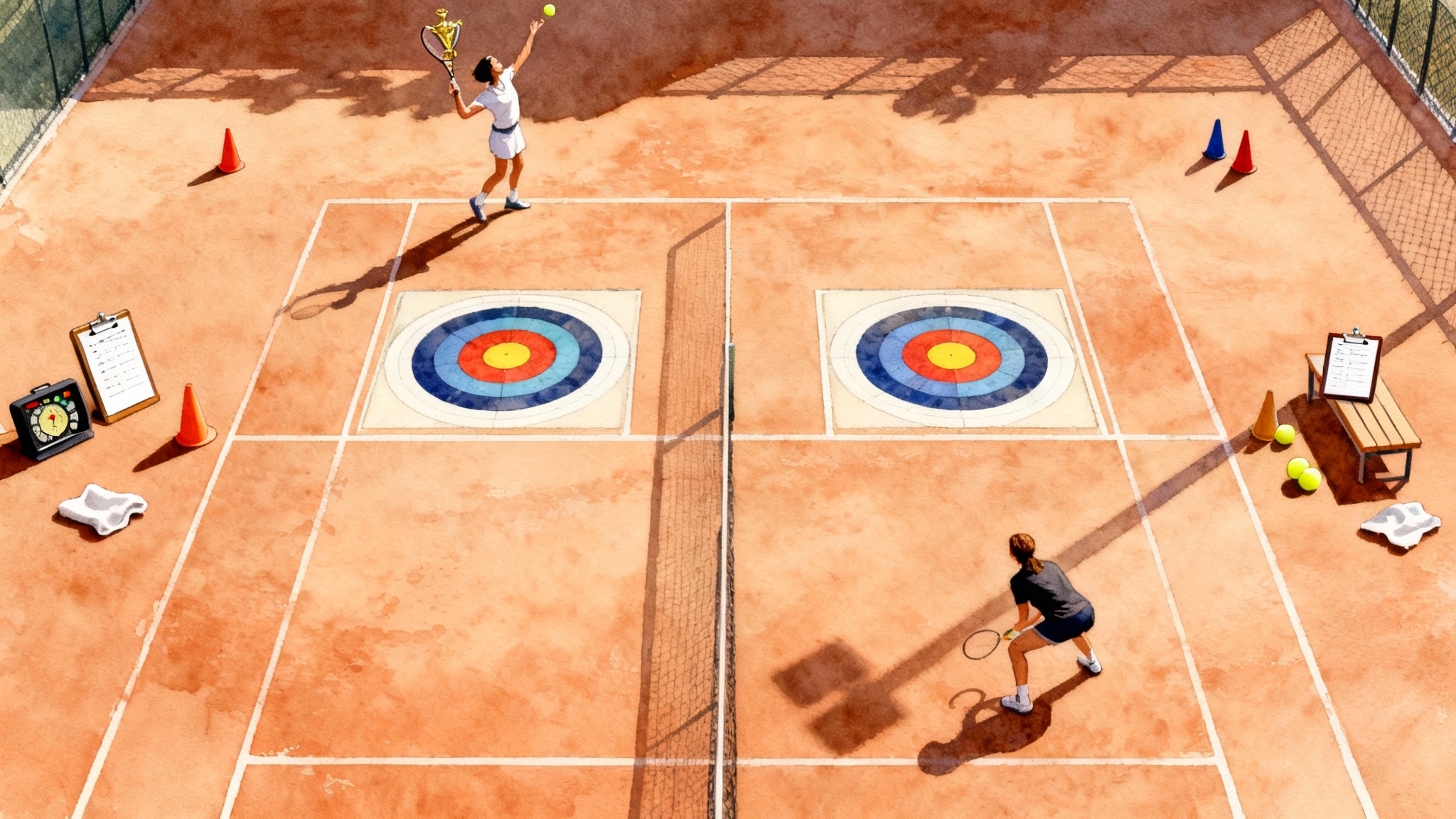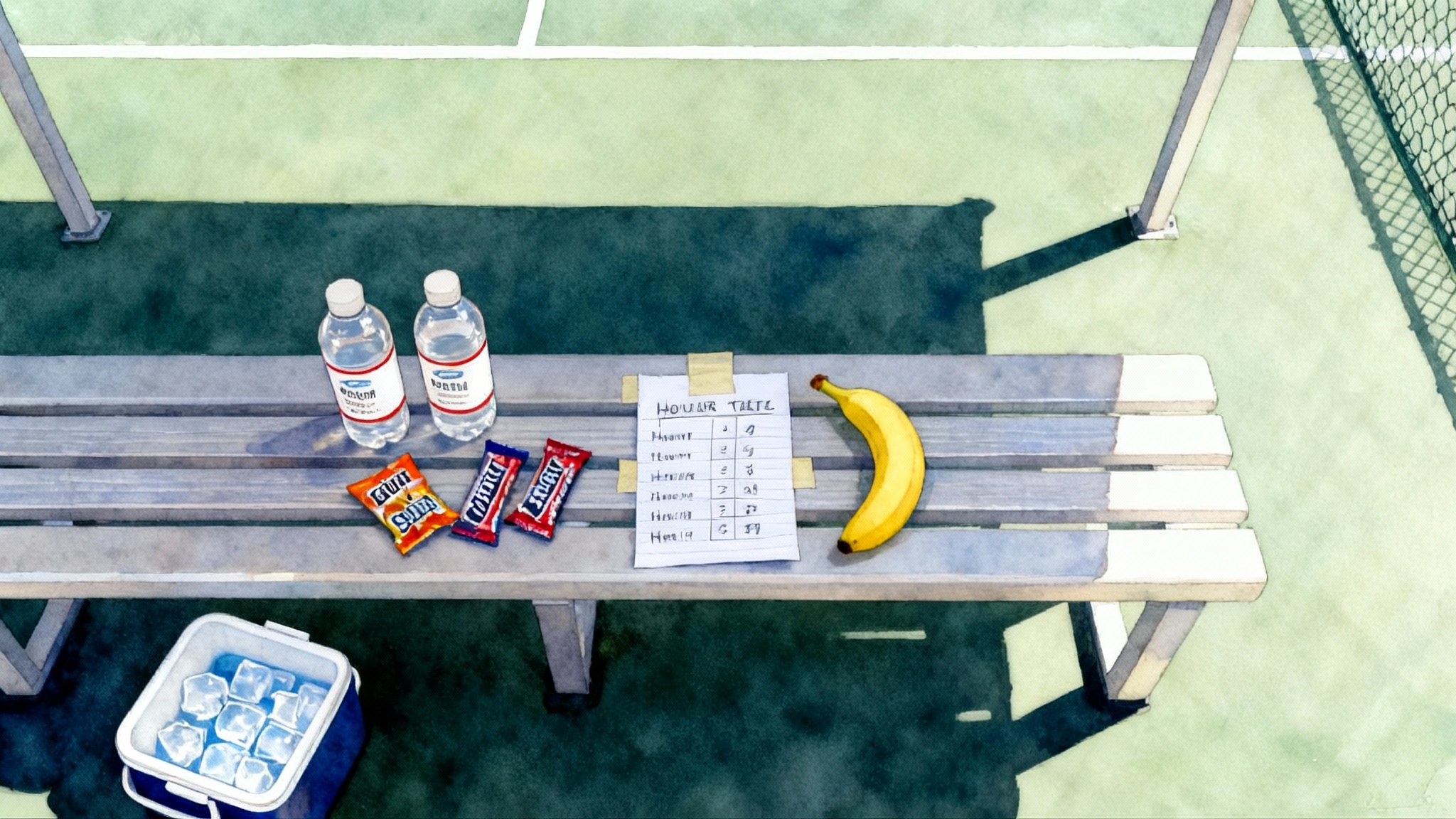Outdoor-to-Indoor Tennis 2025: Fall Transition Playbook
A step-by-step October to November plan for juniors, parents, and adult players to nail the move indoors. Technique tweaks, faster-footwork drills, a 3-week fitness ramp, string tension changes, lighting awareness, and smart scheduling.
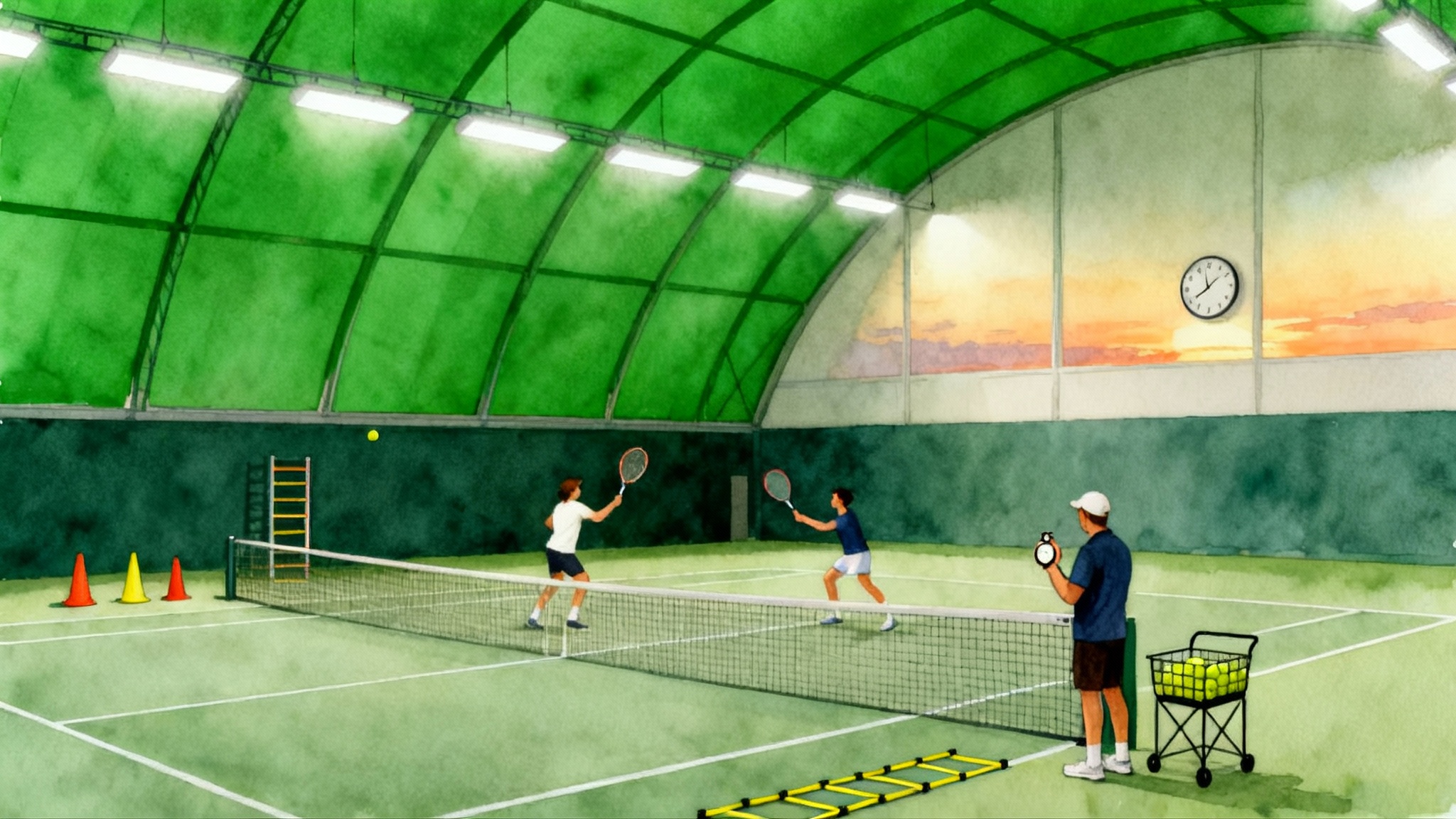
Why indoor tennis feels different on day one
Walk into a bubble or fieldhouse in late October and the game changes fast. The ball comes through quicker, the air is still, and the sound of the strike is sharper. Indoor courts reward earlier contact, compact swings, and lower net clearance because the bounce is truer and wind is removed. Ceiling height and bright fixtures change your lobs, overheads, and toss. Even the rhythm of a match shifts, since points start sooner and often last longer on many club surfaces.
This guide gives a clear, three-week playbook to handle the transition from outdoor to indoor tennis in 2025. It covers technique checkpoints, practical footwork and reaction drills, a fitness ramp you can run on or off court, racquet and string tweaks, lighting awareness, and scheduling checklists for families. You will also see how indoor-focused programs such as GAC High-Performance Tennis Academy and Amy Yee Tennis Center might structure tune-up sessions so you can mirror that structure at home.
The quick physics of indoor play
- No wind or sun means your topspin behaves predictably. Your normal safety window above the net can be smaller. Aim 6 to 12 inches lower than your outdoor margin once you are set.
- The ball often sits up less on low-bite hard courts and arrives faster. To avoid being late, meet contact earlier and shorten your backswing by a hand’s width.
- Overheads, lobs, and high defensive balls interact with permanent fixtures. In indoor tennis, ceilings and lights are permanent fixtures under the rules. If your ball hits a permanent fixture in play, you generally lose the point. For the specifics, review the ITF rule on permanent fixtures.
Technique checkpoints for October to November
Lock in these three adjustments during your first two indoor weeks.
- Earlier contact by a hand’s width
- Cue: catch your finish in front of your lead hip on groundstrokes. If your elbow brushes your rib cage at contact, you are late.
- Ball machine or partner feed: 3 sets of 10 crosscourt forehands and 10 backhands. Call “now” at the moment of contact to reinforce timing.
- Compact backswings
- Cue: replace your loop with a letter “C” that sits no wider than your shoulders. Think “turn, set, go.”
- Drill: shadow 15 forehands and 15 backhands with the racquet head never moving behind your outside shoulder line. Then hit 20 live balls with the same shape.
- Lower net clearance with purposeful height
- Cue: indoors, aim your rally ball to pass one ball height over the net strap, not two. On approach shots aim half a ball above the tape.
- Drill: place two target cones a foot behind the service line and one foot inside the singles sideline. Land 8 of 10 before moving targets deeper.
Bonus indoor serves and returns
- Serve: drop toss height by two inches and add 5 percent more spin. Hit 3 sets of 12 targets: wide, body, T. Log makes versus misses.
- Return: split step as the server lifts into contact, not on the toss. Try a shortened backswing block with a firm wrist. Hit 3 sets of 10 returns alternating deuce and ad.
Footwork and reaction drills for quicker courts
Indoors you have less time to react, so your feet must prepare your swing. Use these targeted drills two or three times per week.
- Split, read, and go ladder: with an agility ladder, step-in split on every second box, then react to a partner’s call of left or right. 4 rounds of 20 seconds, 40 seconds rest.
- Service-box change of direction: start at the T, coach drop-feeds to the forehand corner, then backhand corner, then short middle. 6 balls per set, 6 sets, 45 seconds rest.
- Two-ball burst volley: partner tosses two balls in quick succession from the service line. First to the forehand hip, second to the backhand hip. 8 pairs x 3 sets, focus on one-step punch and recover.
- Short-hop half-volley defense: stand one step inside the baseline. Have a partner skim low balls. The goal is to keep the ball in play with compact swings and firm wrists. 3 minutes on, 2 minutes off, twice.
- Reactive cone call: place four cones around the center hash at one racquet length away. Coach calls color, you move, set, and shadow a compact stroke. 5 calls per set, 6 sets.
Coaching cues that matter indoors
- Split step must be earlier and smaller. Think springy, not floaty.
- First step wins. If you feel stuck at the baseline, make your first step a micro-hop forward.
- Set on contact. Your outside foot should be firm as the ball lands on your side.
A three-week fitness ramp for match readiness
You can make real progress in 21 days without grinding. Use this ladder to build the exact energy system that indoor tennis demands: short, repeated bursts with quick recovery.
Week 1: foundation and mechanics
- Two sessions of high intensity interval training. Format: 10 x 20 seconds hard, 40 seconds easy. Pick a modality that spares your joints: bike, rower, or shuttle runs on a forgiving surface.
- One strength session: hinges, squats, lunges, push, pull, and anti-rotation. Example circuit: 3 rounds of 8 trap bar deadlifts, 8 split squats per side, 6 push ups with hands on a bench, 10 banded rows, 20-second side plank per side. Rest 60 seconds between moves.
- Mobility: 8 minutes after every hit. Hips, ankles, and thoracic spine.
Week 2: tennis-specific speed
- Two court sprint sessions: 3 sets of 6 x 10 meter shuttles from the center hash to each sideline and back. Rest 60 seconds between sets.
- One agility session: 4 rounds of 30 seconds of T-patterns. Start at the T, move forehand corner, back to T, backhand corner, back to T, short middle, back to T. Rest 60 seconds.
- One strength session with power primer: add 3 x 5 medicine ball rotational throws per side at the start.
Week 3: sharpen and absorb
- Two overload sessions: 12 x 15 second bursts at 90 percent effort with 30 seconds rest. Mix footwork ladders with short shuttles.
- One deload strength session: reduce weight by 20 percent, keep quality high.
- Recovery: one day fully off with a 20-minute walk and 10 minutes of easy mobility.
Simple guardrails
- If you cannot nose-breathe during the easy portions, you are going too hard.
- If jump landings are noisy, reduce height. Indoors amplifies sound, which is a useful feedback tool.
Racquet and string tweaks for indoor feel
Small changes create a big difference during the indoor switch.
- String tension: raise tension by 1 to 2 pounds to tame the faster indoor ball. If you normally string at 52 pounds, try 53 or 54 pounds. For juniors under 14, be cautious with very stiff polyester. A hybrid of a softer multifilament in the mains and a smooth co-poly in the crosses is a safe starting point.
- String gauge and shape: a slightly thicker gauge can add control and durability for long indoor blocks. Shaped polys can bite, but they also notch quickly. If you play three or more times weekly, plan a restring every 10 to 15 hours of play.
- Grips: swap a fresh overgrip weekly. Indoor air can be dry, so use a tacky overgrip and keep a small towel courtside.
- Shoes: most indoor courts are hard courts. Pick a shoe with a stable heel counter and a durable, non-marking outsole. If you practice on a cushioned surface, consider a slightly softer midsole or an insole with a bit of forefoot cushioning.
- Dampeners and balance: if the indoor strike feels pingy, try a small rubber dampener. If balls fly on touch shots, add two grams of lead at 12 o’clock and raise tension one pound. Make one change at a time and test for two sessions before deciding.
Lighting and ceiling awareness
Indoor facilities vary. Some are low domes with bright center strips. Others are tall fieldhouses with high rafters and sidewall lighting. Train your eyes and your tactics.
- Overheads: practice three contact points. One at shoulder height for body-overheads, one at eye level for quick flicks, and one fully extended. Mark two ceiling reference points that sit between fixtures to align your toss.
- Lobs: know the ceiling height. If it is low, prefer the topspin lob down the line. Aim to clear the nearest light unit by an imaginary two-racquet window. If the ceiling is high, use the deep middle lob to neutralize I-formation doubles.
- Ball toss: pick a light-free lane. If you see flicker or glare, slide your stance half a shoe length left or right so your toss avoids the fixture. Keep the toss at least one ball lower indoors.
- Visual contrast: a dark under-bill cap or a simple anti-glare eye black strip can reduce upward glare. Test during practice, not during a match.
- Rules check: confirm house rules for lets that strike ceilings or wires. Most facilities treat them as permanent fixtures. When in doubt, ask the desk before you warm up and review the definition of permanent fixtures in the ITF rules linked above.
Scheduling and logistics: a parent checklist for fall
Indoor season works best when families plan two to three weeks ahead. Use this checklist for October and November.
- Court time: book a recurring slot. Many indoor clubs fill Fridays and Sundays first. If a weekly slot is full, ask about multi-week prepay blocks to jump the waitlist.
- Commute buffer: add 10 minutes for winter traffic and parking.
- Gear bag: two overgrips, one extra set of strings, a dark under-bill cap, one towel, and a reusable bottle. Indoor air is dry, so pack electrolyte packets.
- Homework plan: set a 25-minute focus block after practice for schoolwork. Teens often perform better with a fixed post-practice routine.
- Tournament calendar: indoor events often start earlier on Saturdays. Scan sign-up deadlines two weeks ahead.
- Communication: share your athlete’s three weekly goals with the coach by email on Sunday night. Keep the goals observable and measurable, such as “eight of ten first serves into the body target” or “win three of five neutral rallies over seven balls.”
Sample 90-minute indoor tune-ups from real-world programs
Here are practical templates that an indoor-focused program could run in October or November. The names below are real facilities. The content is an example structure you can adapt with your own coach.
GAC High-Performance Tennis Academy: 90-minute first-strike focus
- 0 to 10 minutes: dynamic warmup and mobility. Carioca, A-skips, walking lunges, banded hip openers.
- 10 to 20 minutes: timing ladder and split-step priming. Two rounds of 20 seconds on, 40 seconds off.
- 20 to 40 minutes: compact swing progression. Short court mini tennis, service-line rallies with one ball over the strap, then baseline rallies with 6 to 12 inch net clearance. Keep the backswings shoulder-width compact.
- 40 to 60 minutes: serve plus one. Targets: wide, body, T. After serve, play the first ball to a corner, then finish the point in three balls. Rotate servers every two points.
- 60 to 75 minutes: return plus one. Emphasize smaller split steps and blocked returns to deep middle, then add directional control.
- 75 to 85 minutes: transition games. Approach on a short feed, one volley, one overhead, play out. Focus on overhead contact that avoids lights and rafters.
- 85 to 90 minutes: mobility and intention reset. Write one cue for the next session.
Amy Yee Tennis Center: 90-minute control and defense tune-up
- 0 to 10 minutes: joint prep with ankle rocks, hip cars, and thoracic rotations.
- 10 to 25 minutes: crosscourt patterns. Six-ball patterns that end with a neutral deep middle to reset.
- 25 to 45 minutes: depth and height control. Targets one ball over the strap with cones three feet inside the baseline. Score 10-ball rallies where only deep middle and crosscourt are allowed.
- 45 to 65 minutes: defensive short-hop series. Players stand one step inside the baseline and keep a compact swing to handle skidding balls.
- 65 to 80 minutes: doubles net instincts. Two-ball burst volleys, then live points where the net player must poach at least once per game.
- 80 to 90 minutes: serve rhythm under lights. Lower toss, more spin, and three target zones per side.
Adaptation notes for juniors and adults
- Juniors 10 to 13: reduce total live-ball volume by 15 percent and extend rest by 10 seconds per drill. Keep the cues simple and visual.
- High school and collegiate players: keep the volume, but cap point-play sets at 11 points to avoid fatigue drops late in a session.
- Adult players: add two short water breaks and one technique reset where you film a single rally for feedback.
Match tactics that work indoors
Singles
- Serve to the body more often to jam early contact. Follow with a forehand to the open court. For deeper guidance on constructing the opening patterns, see first four shots patterns.
- On neutral balls, choose the lower net window and hit heavier, not higher. The ball carries through.
- Defend with deep middle to buy time. Indoors, this neutralizes angles and keeps you in the center.
Doubles
- Poach on the first ball after your partner’s serve. If the returner shortens the backswing, expect a flatter ball that you can intercept.
- Use the down-the-line topspin lob only if the ceiling is high. On lower ceilings, chip low at the feet.
- Communicate a fixed plan before every point: serve placement, first poach signal, and a fallback neutral ball.
Score your progress every week
- First-serve body target: 30 serves, goal is 18 or more in. Record the number.
- Compact-swing rally: 20-ball rally with a one-ball net window. Goal is 12 or more clean.
- Reaction test: six shuttle returns in 20 seconds from center hash to sideline and back. Goal is two or more consistent rounds with even pace.
- Mental clarity: write one indoor cue on your string bed with a washable marker. If you do not remember it during points, it is too complicated.
A simple three-week calendar to copy
Week 1
- Two on-court sessions using the compact-swing progression and depth targets.
- One fitness interval session and one strength session.
- One serve-only session with a lower toss.
Week 2
- Three on-court sessions: serve plus one, return plus one, and defensive short-hop day.
- Two fitness sessions with court sprints and agility patterns.
- Fresh overgrip and string check.
Week 3
- Two on-court sessions that start with two tie-breaks to simulate indoor match rhythm.
- Two overload footwork sessions with shorter rests.
- A light strength deload, mobility, and one full rest day.
Put it together%C2%A0
Indoors rewards intention. The ball gets to you sooner, so your plan must arrive even earlier. If you build earlier contact, a compact swing, a deliberate net window, and footwork you can trust, you will see the game slow down. Add a simple 21-day fitness ramp and a one to two pound string bump, then practice how you see the ball under lights and ceilings. Finally, plan your schedule before the month turns and treat every 90-minute tune-up as a rehearsal for match day. Do this, and your October to November transition becomes predictable, not stressful. When your first indoor match begins, you will feel like you have already played it twice.
